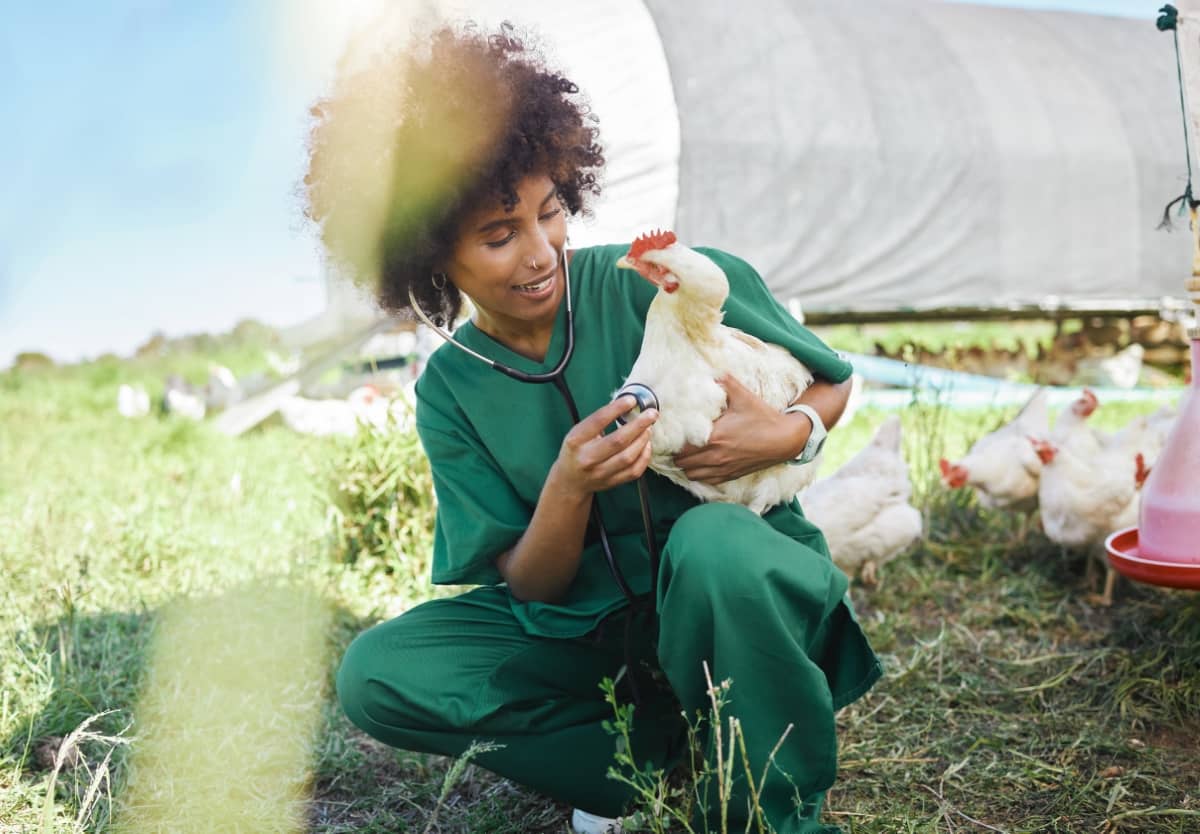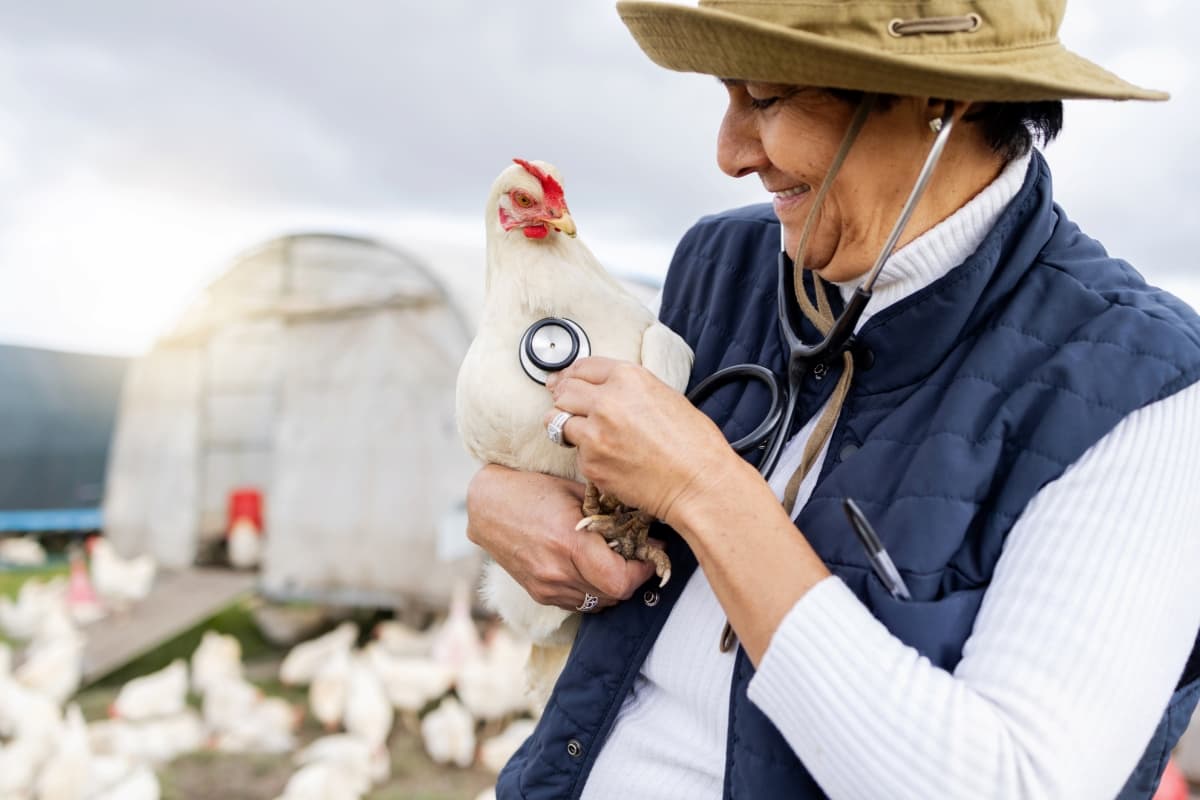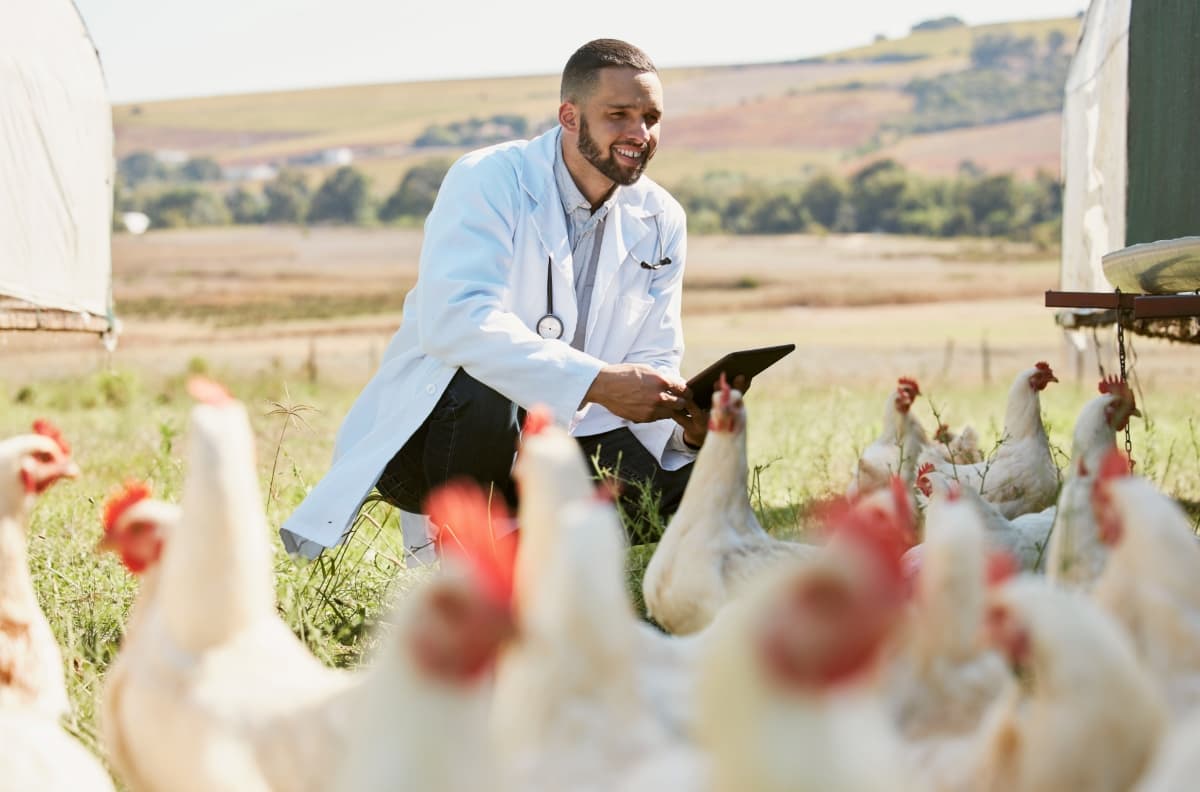Raising chickens, whether as a backyard hobby or on a larger farm, requires an attentive eye and an understanding of the nuances of their health. From unexpected behavior changes to the subtlest signs of diseases, deciphering what’s normal and not is crucial in keeping your flock thriving. In this comprehensive guide, we explore the various techniques of conducting a detailed chicken health check, the key indicators to watch out for, and how often you should check on chickens.

How to Do a Chicken Health Check
Complete the Tutorial on How to Do a Proper Chicken Health Check
A chicken health check is not merely an observation; it’s an interactive, physical examination that allows you to get up close and personal with each bird. This examination, also known as a chicken physical exam, should be done regularly to catch any health issues early before they worsen. But how often do you have to check on chickens?
Experts advise performing a thorough health check at least once a month. However, it is recommended to observe your flock daily for any signs of abnormal behavior or signs of illness. During the monthly health check, you will take the time to examine each chicken individually. Begin by observing the chicken’s behavior in the flock.
Look for signs of lethargy, aggression, or withdrawal from the group, which could indicate an underlying health issue. Next, carefully hold the chicken and look at its overall body condition. Feel the breastbone; if it’s prominent with little muscle on either side, your chicken may be underweight. On the other hand, overweight chickens have excess fat on their abdomen, which can cause reproductive and health issues.
Expert Advice for Evaluating Chicken Health During a Check-Up
When conducting a chicken physical exam, there are several areas you need to focus on. Start by examining the chicken’s eyes. They should be clear, bright, and alert, with no discharge or cloudiness. The comb and wattles should be bright and full. Pale combs can indicate blood loss, stress, or disease.
Next, examine the beak, which should be well-formed without cracks or breaks. The chicken’s nostrils should be clear, and there should be no discharge signs indicating a respiratory infection. Take a close look at the feathers as well. Healthy feathers should be shiny, full, and free from parasites like lice or mites. The skin should be clear without signs of redness, swelling, or lesions.
As you continue your examination, don’t forget to assess the legs and feet. The scales on the legs should lie flat, and there should be no signs of mites, lice, or other parasites. The feet should be free of bumblefoot (a swollen, inflamed area often caused by a bacterial infection), and the nails should be a healthy length.
Detailed Checklist for Assessing the Well-Being of Your Chickens
- Behavior: Is the chicken active, alert, and socializing with others in the flock?
- Body condition: Does the chicken have a healthy weight and appear physically fit?
- Eyes: Are the eyes clear and bright without any discharge?
- Comb and wattles: Are they bright and full or pale and shriveled?
- Beak and nostrils: Is the beak in good condition, and are the nostrils clear without discharge?
- Feathers and skin: Are the feathers full and glossy? Is the skin clear of parasites and lesions?
- Legs and feet: Are the scales on the legs flat? Are the feet free of bumblefoot, and are the nails a healthy length?
In case you missed it: Best Automatic Chicken Waterers: What’s Best for Your Flock

Proper Techniques for Conducting a Comprehensive Chicken Health Check
Performing a comprehensive chicken health check requires patience, attentiveness, and gentleness. Start by catching the chicken calmly and gently, avoiding unnecessary stress. Using both hands, hold the chicken firmly but not tightly, giving it a sense of security. Begin your physical examination from the head, slowly down to the tail. During the process, you should observe and feel for any abnormalities like lumps or injuries. Ensure to inspect under the wings and around the vent area, which is often overlooked during checks.
Checking the chicken’s crop is also crucial. A healthy crop should be full in the evening (after a day of eating) and mostly empty in the morning. A crop that is hard, overly squishy, or still full in the morning may be indicative of crop issues. Moreover, do not overlook the importance of examining the chicken’s droppings. Healthy droppings are firm and brown with a white part, the urates. Abnormal colors, consistency, or blood presence could indicate health issues like worm infestation or coccidiosis.
Key Indicators to Look for When Doing a Chicken Health Assessment
- Changes in behavior: If a chicken behaves differently, such as being less active, isolating itself, or showing aggression, it could be a sign that it’s not feeling well.
- Changes in eating and drinking habits: A chicken-eating or drinking less than usual could be unwell. On the other hand, excessive drinking could indicate diseases like diabetes or kidney issues.
- Changes in egg production: A drop in egg production, malformed eggs, or changes in shell quality can indicate stress, disease, or age-related issues.
- Visible signs of illness: These include discharge from the eyes or nostrils, diarrhea, bloody stools, coughing, wheezing, or lameness.
Effective Methods for Monitoring and Maintaining Chicken Health
Preventive care plays a significant role in maintaining chicken health. A balanced diet, ensuring clean living conditions, and practicing biosecurity can drastically reduce the chances of spreading disease within the flock. Implementing vaccination programs can also help protect your chickens against certain diseases.
Regular deworming and pest control are critical, too, as parasites can pose significant health risks to your flock. Remember, catching potential issues early is key to successful treatment and recovery. Therefore, regular health checks and daily observations should be integral to your chicken-keeping routine.
Important Aspects to Consider During a Routine Chicken Health Examination
During a routine chicken health examination, it’s important to evaluate the overall living conditions of the chickens as well. This includes checking the coop for cleanliness, proper ventilation, and the absence of parasites. Clean the coop often to avoid droppings accumulating, which may cause ammonia buildup and the spread of diseases.
Check the feed and water sources. The feed should be fresh and mold-free, while the water should be clean and free of algae or slime. Chickens should have access to grit for digestion and oyster shells for calcium if they are laying eggs.
In case you missed it: 10 Reasons Why Your Chickens Stopped Laying Eggs: Solutions Provided

Finally, take note of the flock’s dynamics during your routine health examination. Chickens have a pecking order; sometimes, weaker chickens may get bullied and have trouble getting enough food or water. Monitoring the group dynamics can help you identify such issues and intervene when necessary.
Conclusion
Conducting regular health checks and being aware of the key indicators of health issues can significantly contribute to the well-being of your chickens. You can ensure your chickens remain healthy, happy, and productive with the right techniques and attention to detail.
- Ultimate Guide to Ossabaw Island Hog: Breeding, Raising, Diet, and Care
- Ultimate Guide to Juliana Pig: Raising Facts, Size, Diet, Care, and Lifespan
- Raising Lleyn Sheep: Disadvantages, Price, Uses, Characteristics, and Care
- Ultimate Guide to Meishan Pig: Breed Facts, Breeding, Raising, and Care
- Ultimate Guide to Teacup Pigs: Raising, Diet, Lifespan, Cost, and Care
- Guide to Raising Poll Dorset Sheep: Facts, Profile, Characteristics, Uses, and Care
- Ultimate Guide to Bighorn Sheep: Characteristics, Diet, Lifespan, Breeding, and Lifecycle
- Ultimate Guide to Raising Katahdin Sheep: Farming Facts, Breed Profile, Uses, and Care
- Ultimate Guide to Raising Oreo Cows: Belted Galloways Farming Facts, Profile, Uses, and Care